
DISCOVER IZU
The Izu Peninsula is a paradise for cyclists from all over the world. Just 50 minutes from Tokyo and a stone’s throw from Mount Fuji, the Izu Peninsula has always been one of Japan’s leading thermal and nature tourism destinations, attracting countless visitors and cyclists each year eager to admire its extraordinary beauty in silence.
The Izu Peninsula offers both an idyllic landscape and an uncrowded base for visiting Mount Fuji or admiring it from its superb peaks.
The Izu Peninsula is also the stage for the world’s most beautiful cycling event, Eroica Japan. Every year in May, thousands of cyclists come from all over the world to tackle the many fascinating routes.
Izu was also the stage for the track and MTB races at the Tokyo 2020 Olympics due to its facilities for professional cyclists. International cycling competitions still take place all year round.

WHAT TO VISIT
NORTH IZU
NUMAZU
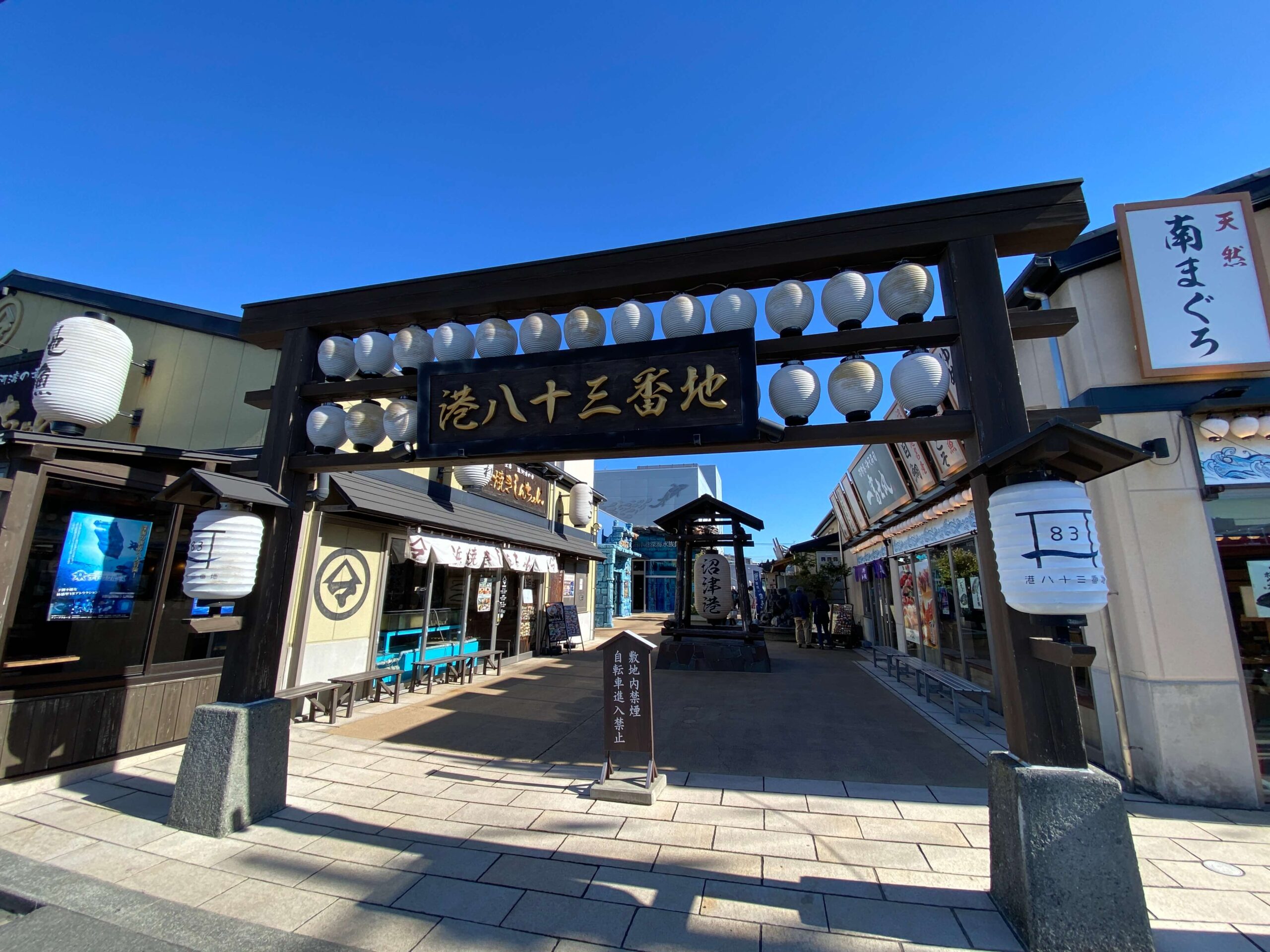
NUMAZU FISH MARKET
The Numazu port (沼津港) is a mixture of markets that handles a big volume of fish. It is easily accesible to tourists too to enjoy the local fish. You can eat there or take away. There is a park nearby.
If weather is fine take the short boat tour, 1000 yen for adults for a 30 minutes. You may have a wonderful view of Mount Fuji.
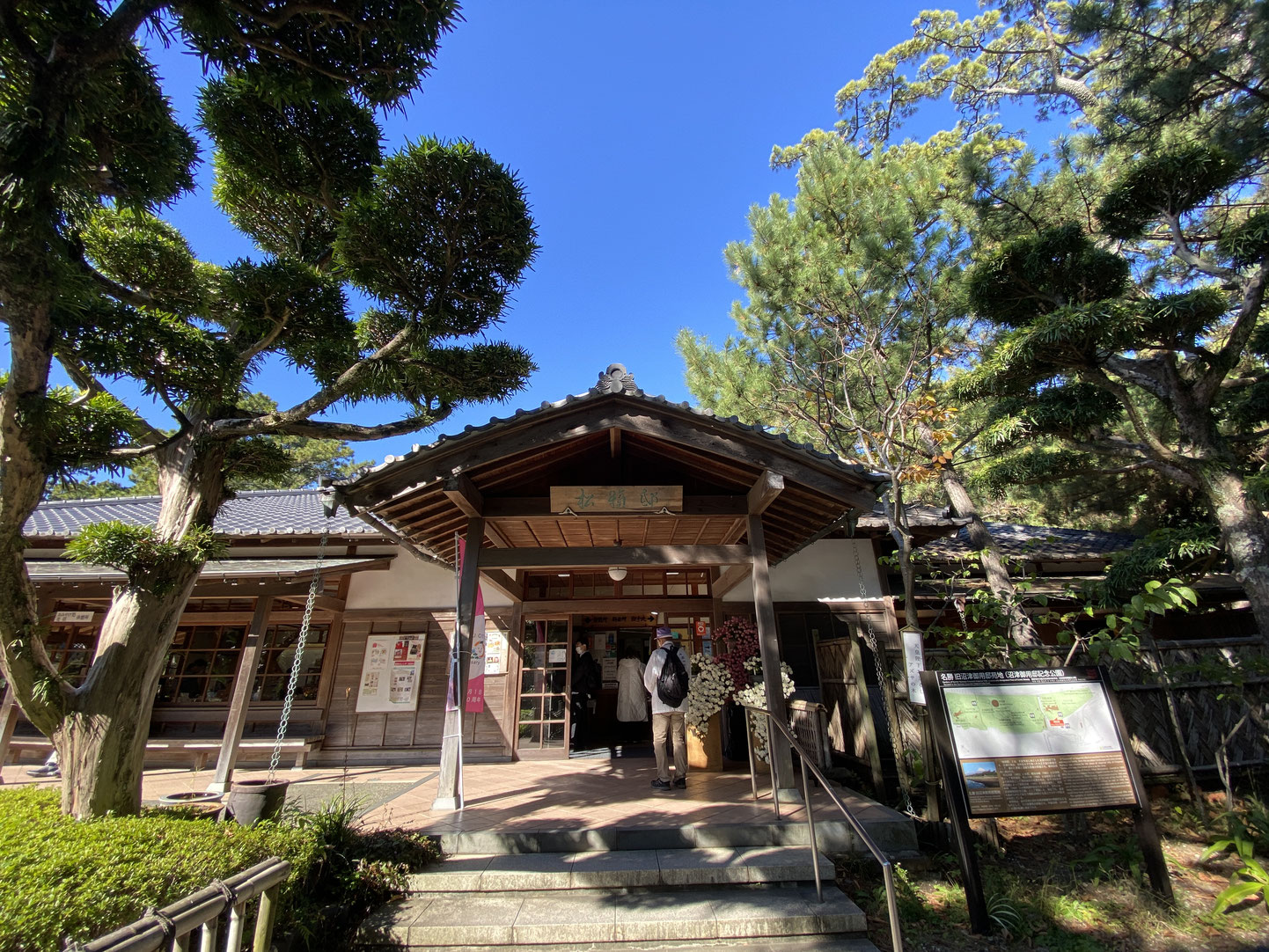
NUMAZU IMPERIAL VILLA MEMORIAL PARK
The Numazu Imperial Villa is a former imperial summer residence located in the city of Numazu.
The beautiful villa was constructed by Emperor Meiji in July 1893. The grounds covered 104,402 square meters, and it’s located facing Suruga Bay adjacent to the Senbon-Matsubara, a scenic pine grove.
The villa also has views of Mount Fuji.
MISHIMA
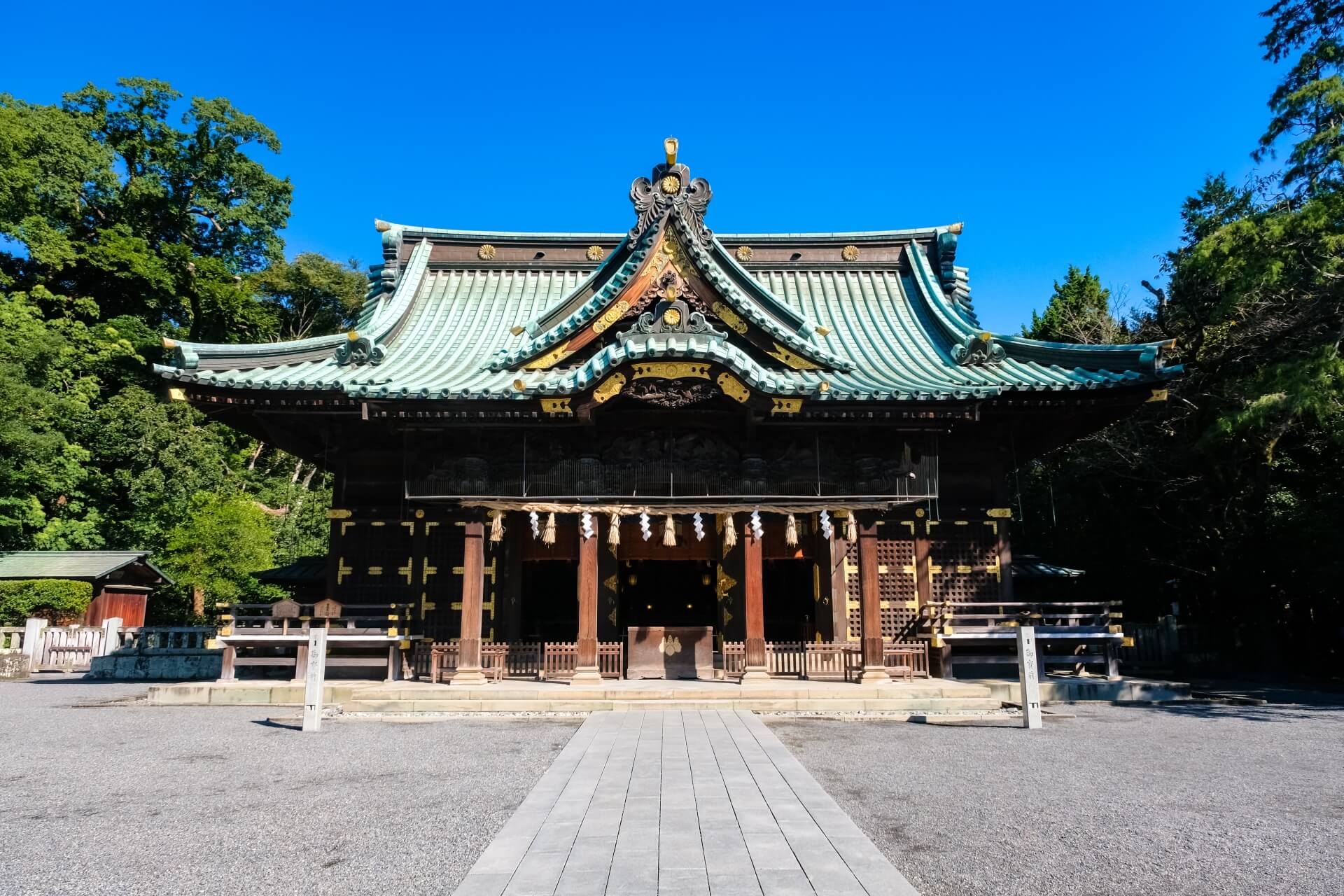
MISHIMA TAISHA SHRINE
Mishima Taisha Shrine is the highest-ranking shrine in the region and one of the greatest holy sites on the old Tokaido road between Kyoto and Tokyo. Its magnificent wood pavilions are skillfully decorated with intricate engravings and have been designated as Important Cultural Properties.
Mishima Taisha Shrine prospered as the gateway to the Izu region as travelers spread its name and influence countrywide.
During the Mishima Summer Festival or New Year period and you’ll find the shrine is still a hive of activity.9
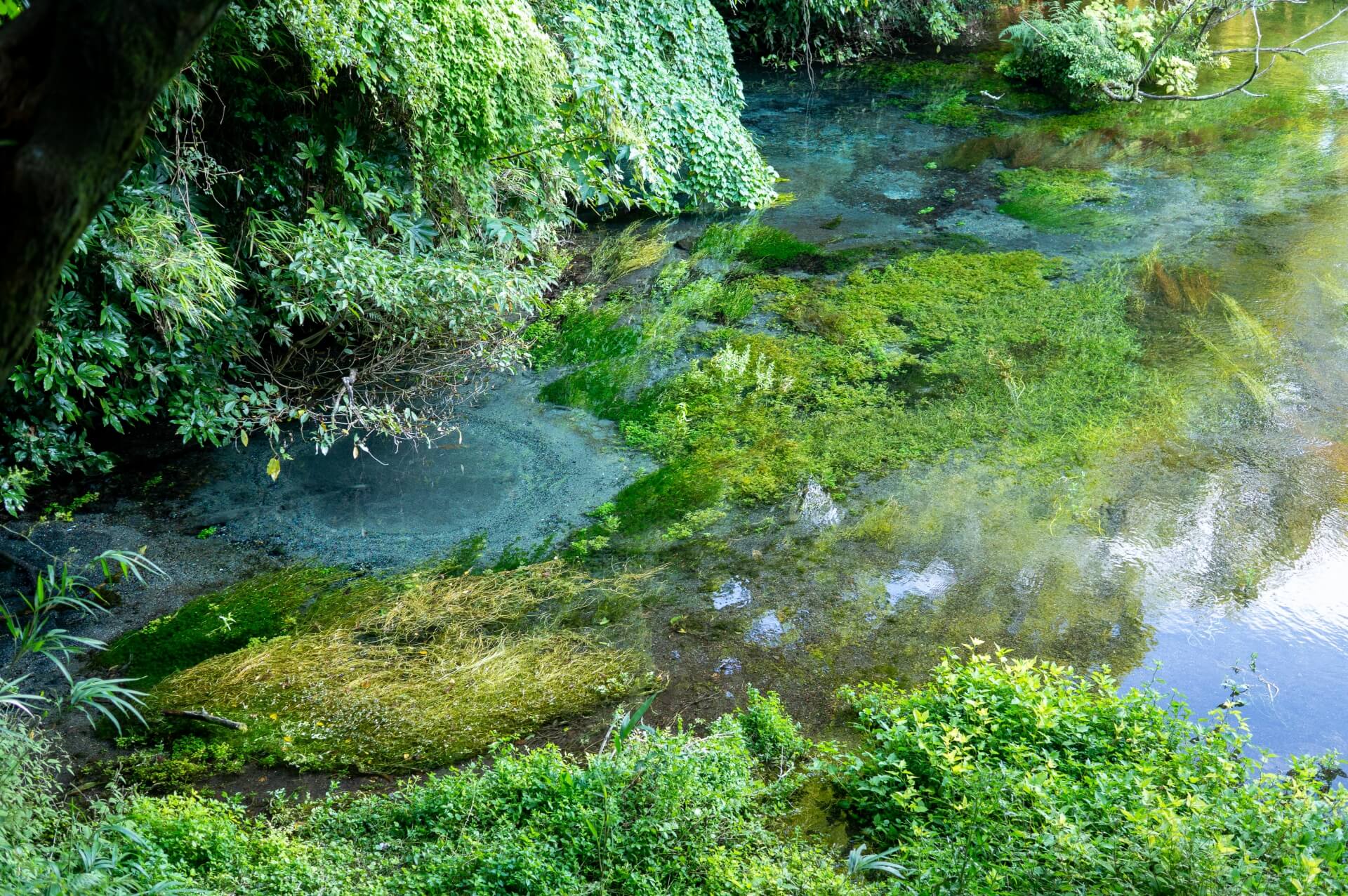
MISHIMA WATER FRONT
Mishima is famous as a city of rivers. A few minutes from Mishima station you can find many rivers and canals with crystal clear water that flows from underground and comes directly from the melting snow of Mount Fuji.
The spring water from Mt. Fuji is cool in summer, and warm in winter. You can walk along the paving stones down the stream.
Using the bicycle to visit them is very convenient.

MISHIMA SKY WALK BRIDGE
The Mishima Skywalk is a gigantic suspension bridge and the longest pedestrian suspension bridge in Japan. It is recommended that you visit in the mornings or evenings. Mt. Fuji and the ocean are especially beautiful around nine in the morning when the temperature is low.
You can also enjoy the beautiful sunset from October to February.
IZUNOKUNI

NIRAYAMA REVERBERATORY FURNACE
The Nirayama Reverberatory Furnaces are a set of four reverberatory furnaces erected by the Tokugawa shogunate to produce cannons to counter the advance of Western forces into Japan.
The site received UNESCO World Heritage Site status in 2015.

EGAWA RESIDENCE
The Egawa samurai family residence was the home of the governor of this area. The house is preserved in excellent condition and here you can glimpse the lifestyle of the samurai classes of hundreds of years ago.
The Egawa family played a crucial role in the construction of the Nirayama Nirayama Reverberatory Furnaces .
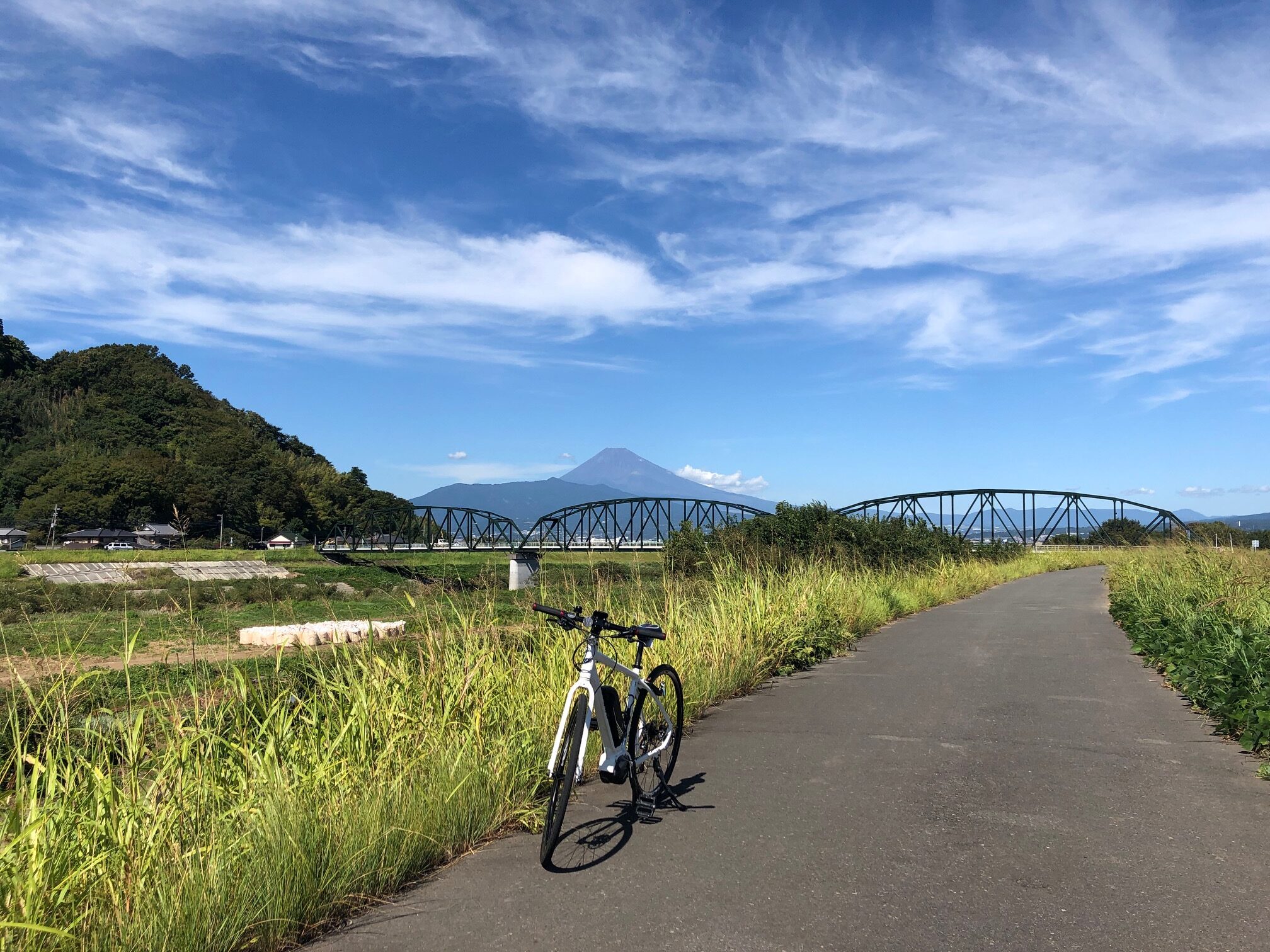
KANO RIVER CYCLING ROAD
The cycle route along the Kano River is famous among cyclists and connects the towns of Numazu and Izu. Along the way, you can visit many spa areas, temples and places of natural interest. This route is also ideal for those who are not used to cycling long distances.
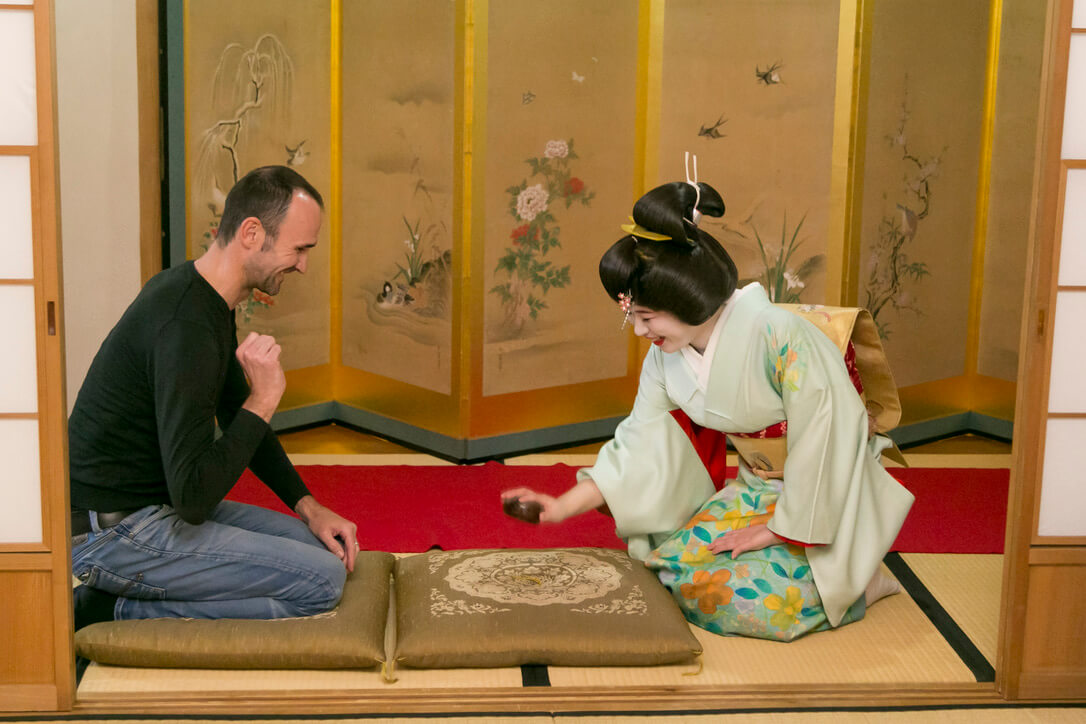
IZU NAGAOKA GEISHA CULTURE
Izunokuni-city has a long tradition of geisha (Japanese female entertainers trained in singing, dancing, the art of conversation and other arts in order to serve guests as hired companions).
You can experience traditional Japanese dance, dressed in kimono.
They help you wear kimono and teach you how to dance.
Book the Traditional Geisha Performance here: Izu Nagaoka Kenban (Kenban is a place for office and training room)
Tel: 055-947-1355
ATAMI
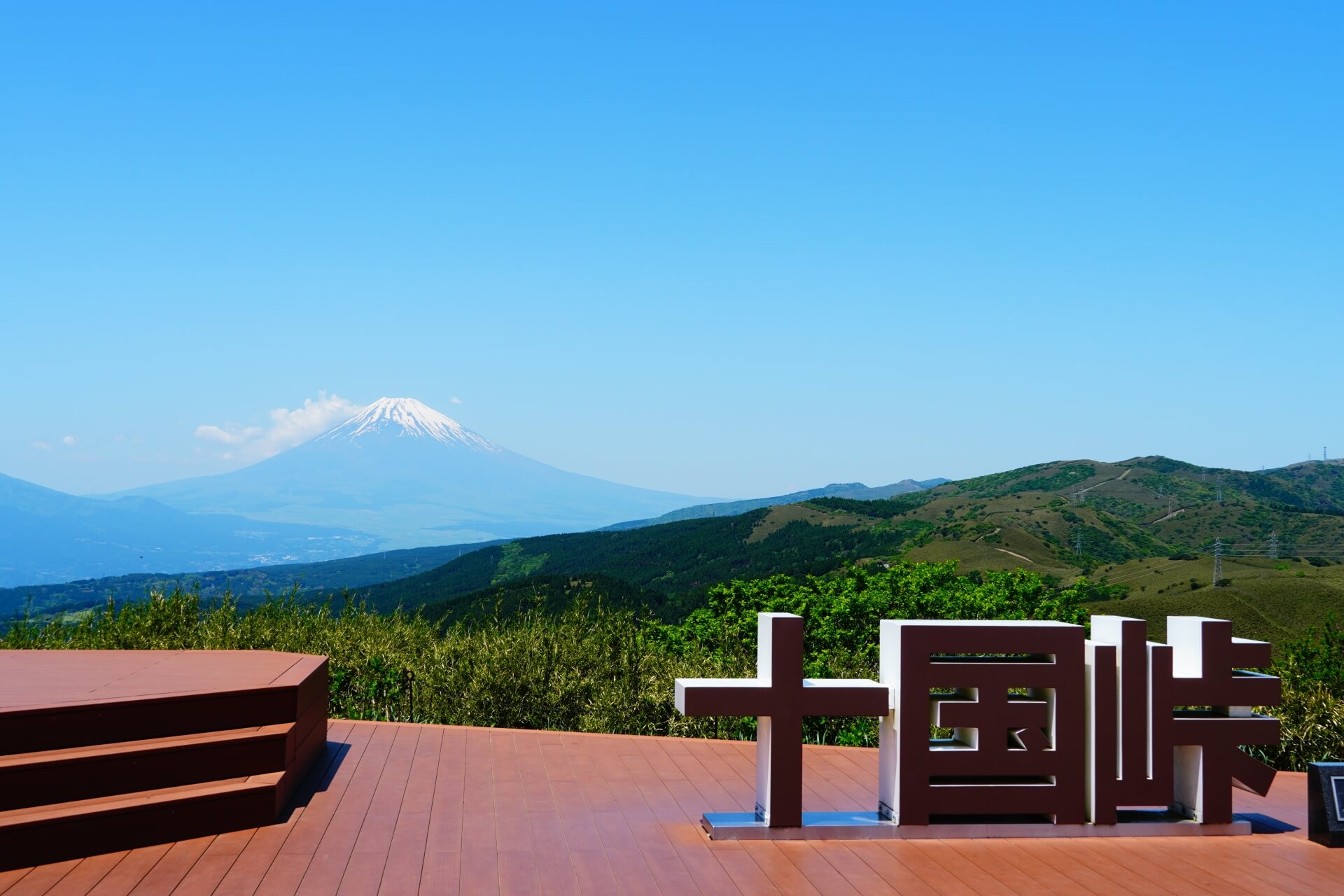
JUKKOKU PASS
Between Atami and Hakone is the Jukkoku Pass, from where there is a fantastic panoramic view of Mount Fuji. Using an eBike is the best way to tackle the climb and descent to Mishima.
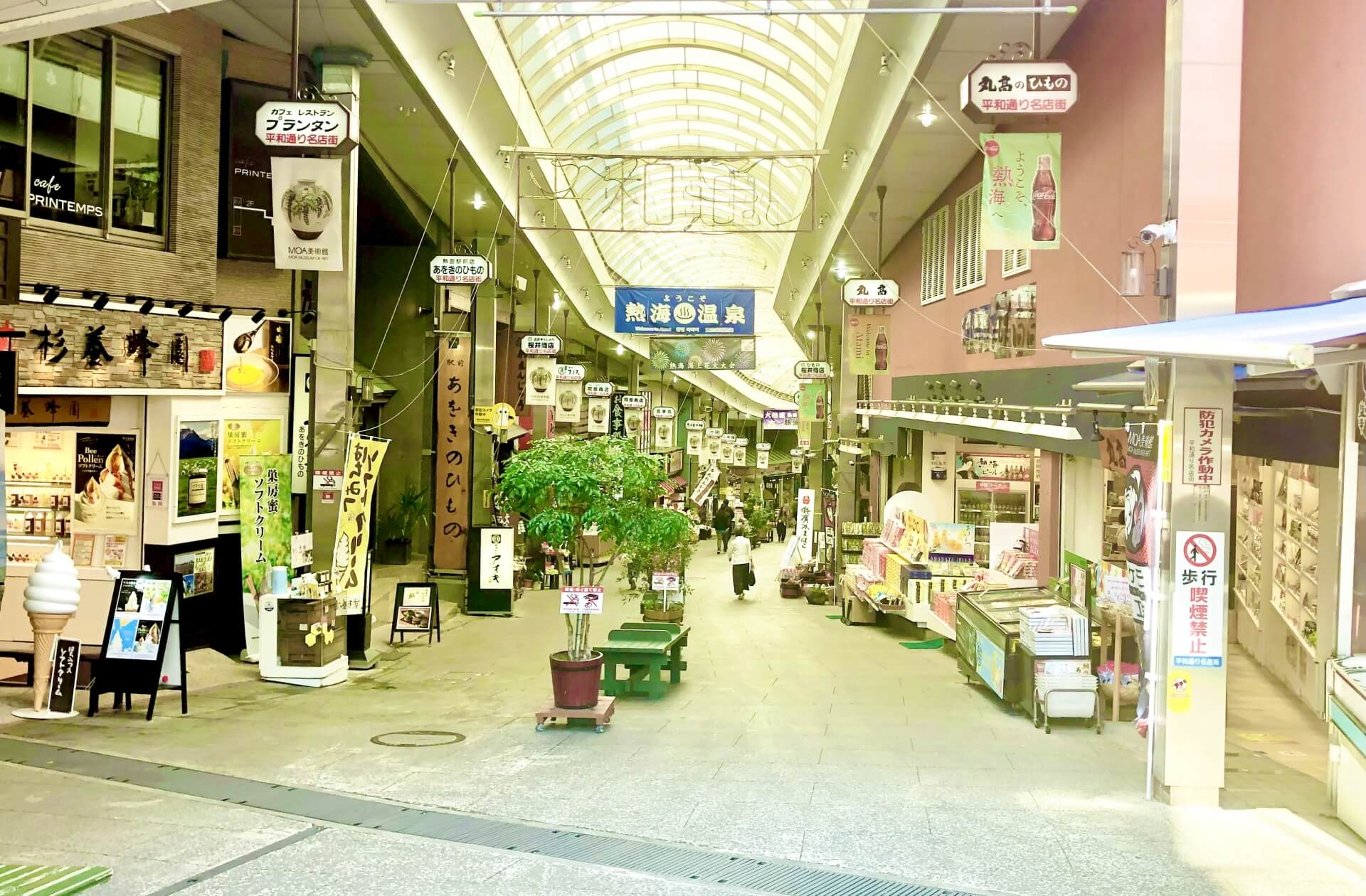
ATAMI STATION HEIWA AND NAKAMISE STREET
Opposite Atami Station are two traditional shopping streets, Heiwa-dori and Nakamise, some of which have been open for more than 60 years. These small shops offer a unique Japanese shopping experience. There are restaurants, cafés, sushi restaurants and many souvenir shops.
CENTRAL IZU
IZU
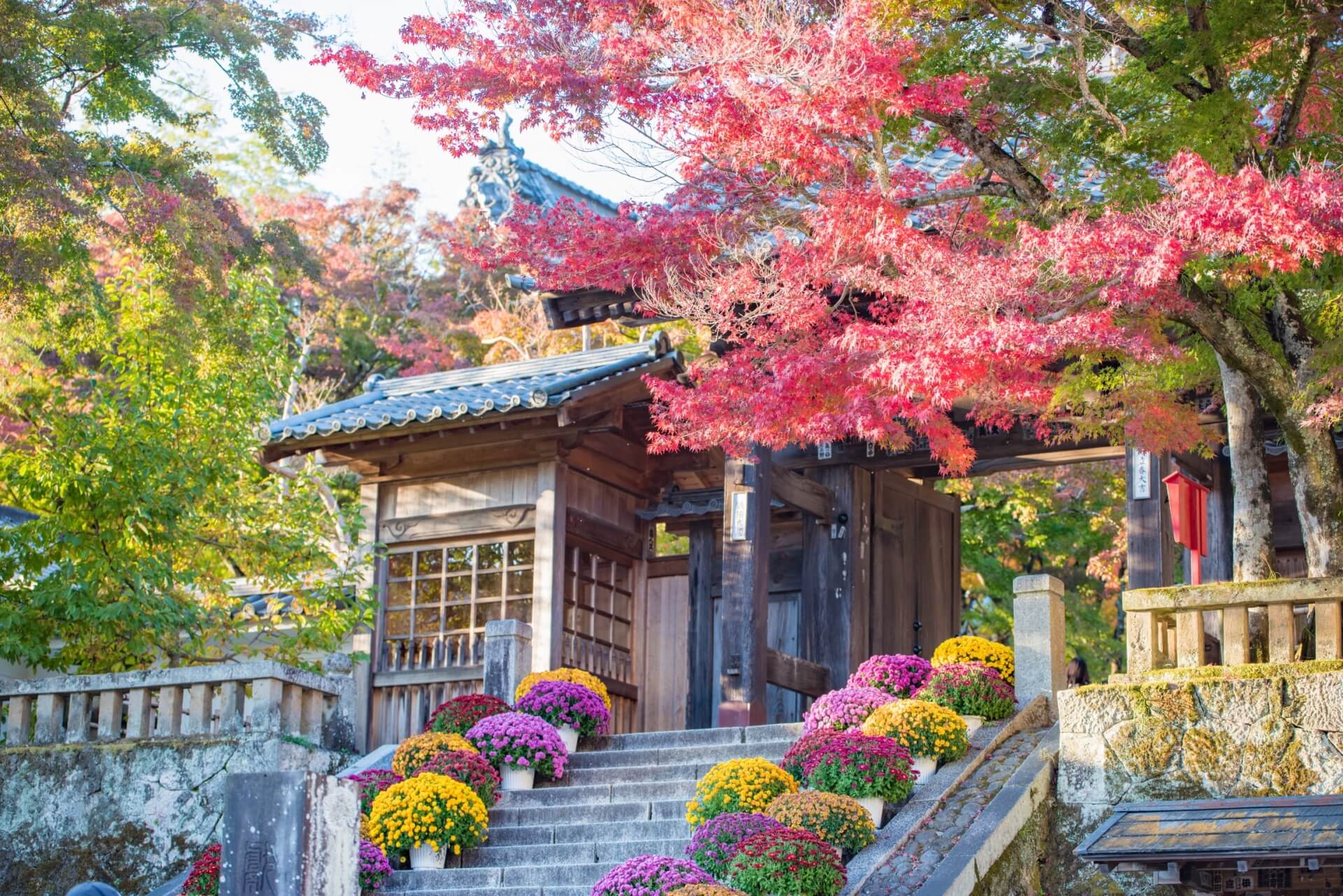
SHUZENJI AREA
Shuzenji Onsen is one of the oldest and most famous spa resorts on the Izu Peninsula. Especially famous is the Shuzenji Temple located in the centre of the town. It is one of the most important temples in Japan, founded about 1200 years ago.
Other attractions in the centre of Shuzenji are a small bamboo forest and some hot thermal baths where you can soak your feet.
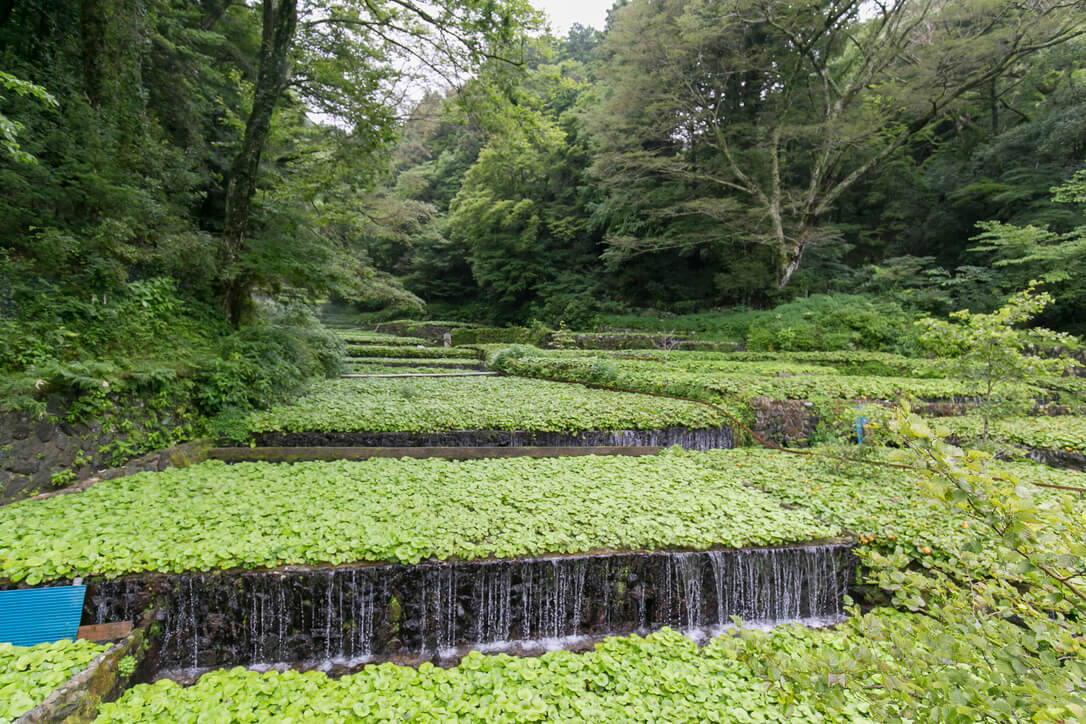
WASABI AREA
Izu is famous for the cultivation of wasabi, an indispensable ingredient in Japanese cuisine.
The most famous area is Naka-Izu and Ikadaba Wasabi Field. There are about 15 hectares of terraced landscape.
It is the perfect place to stay cool and recover during the hot months.

WEST IZU SKYLINE
The Nishi Izu Skyline is one of the best cycling and scenic routes not only in Izu, but in the whole of Japan. This route offers incomparable views of Mount Fuji and Suruga Bay. Starting at sea level, it goes up to a height of 1,000 metres. This scenic route is suitable both for those who want to get a real workout and for those who want to enjoy a unique natural spectacle (eBike recommended).
One stop to make is at the Daruma Mountain Kogen Rest House, from where there is a wonderful view of Mount Fuji.
ITO
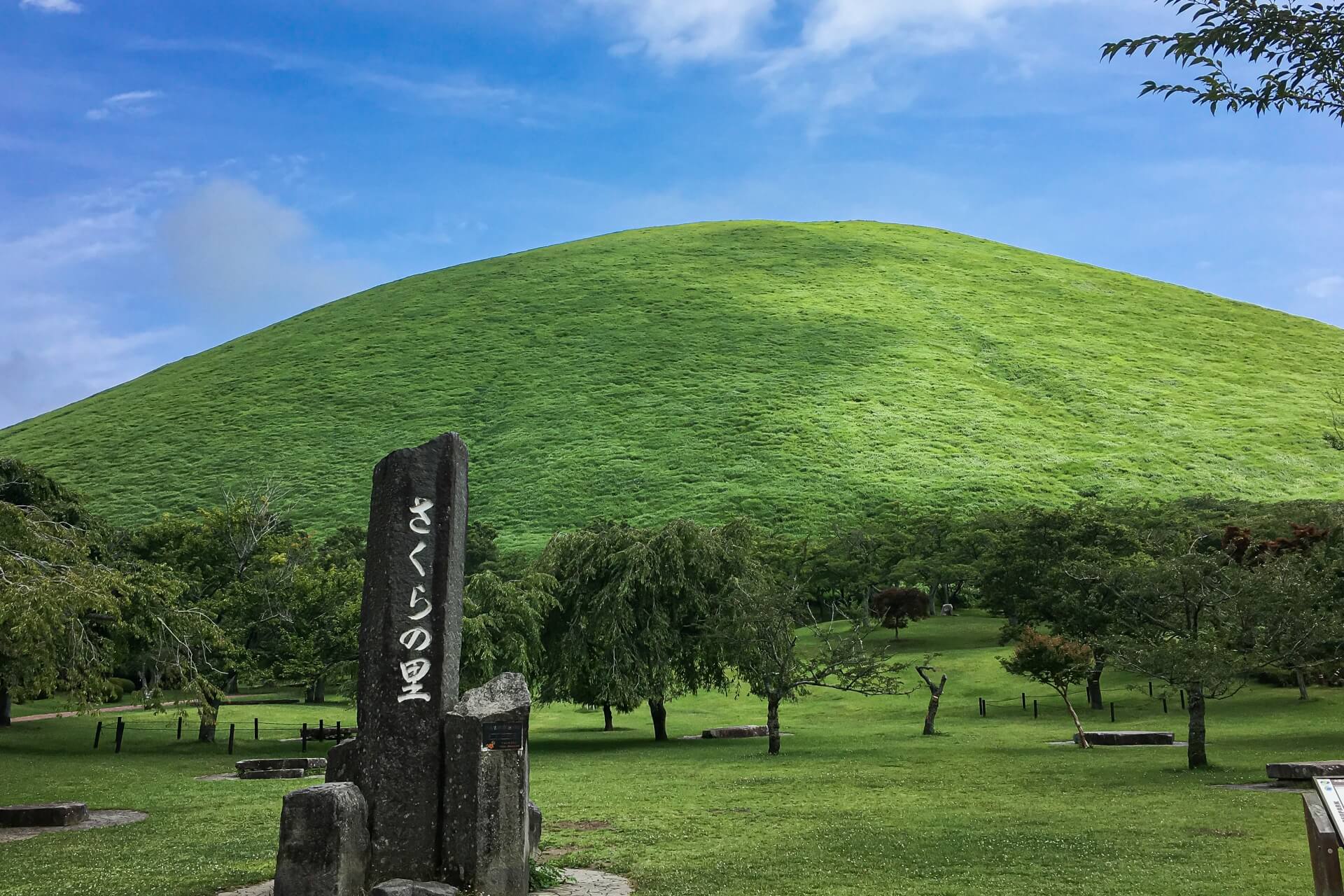
MT. OMURO
Mount Omuro is an ancient caldera of 580 metres. From spring to autumn it is covered in green, in winter it is often snow-covered. At the foot of Mount Omuro is the cherry blossom viewing site.
In February, one can witness the traditional burning of the dry grass covering the mountain, marking the arrival of spring. In spring, the mountain is surrounded by hundreds of cherry blossom trees.
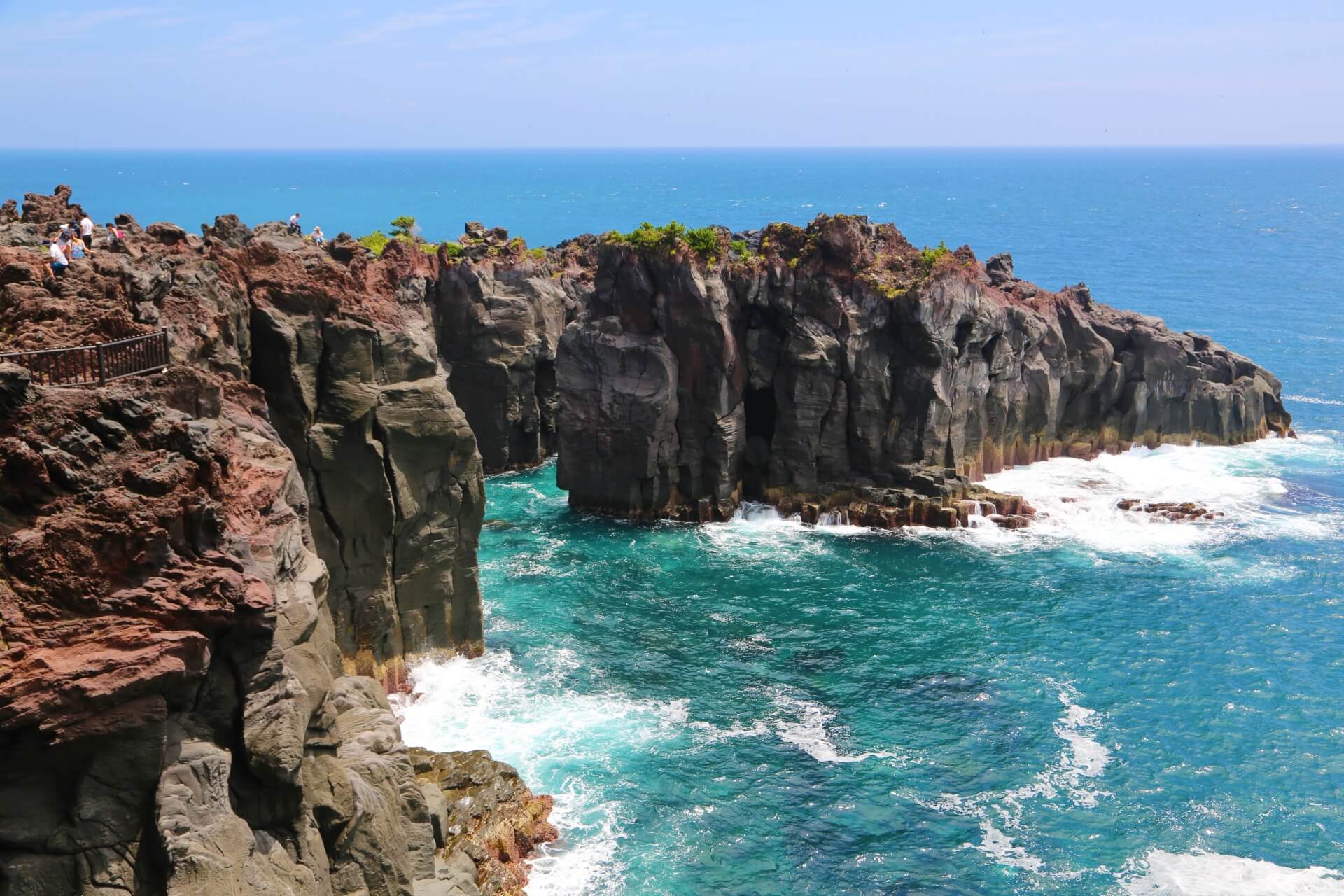
JOGASAKI COAST
The Jogasaki coastline was formed by lava that escaped during the eruption of Mount Omuro some 4,000 years ago.
It is recommended to take a walk along the 9-km nature trail. From here one can enjoy a panoramic view of the seven Izu islands of the Izu archipelago and the Amagi mountain range.
SOUTH IZU
NISHI IZU
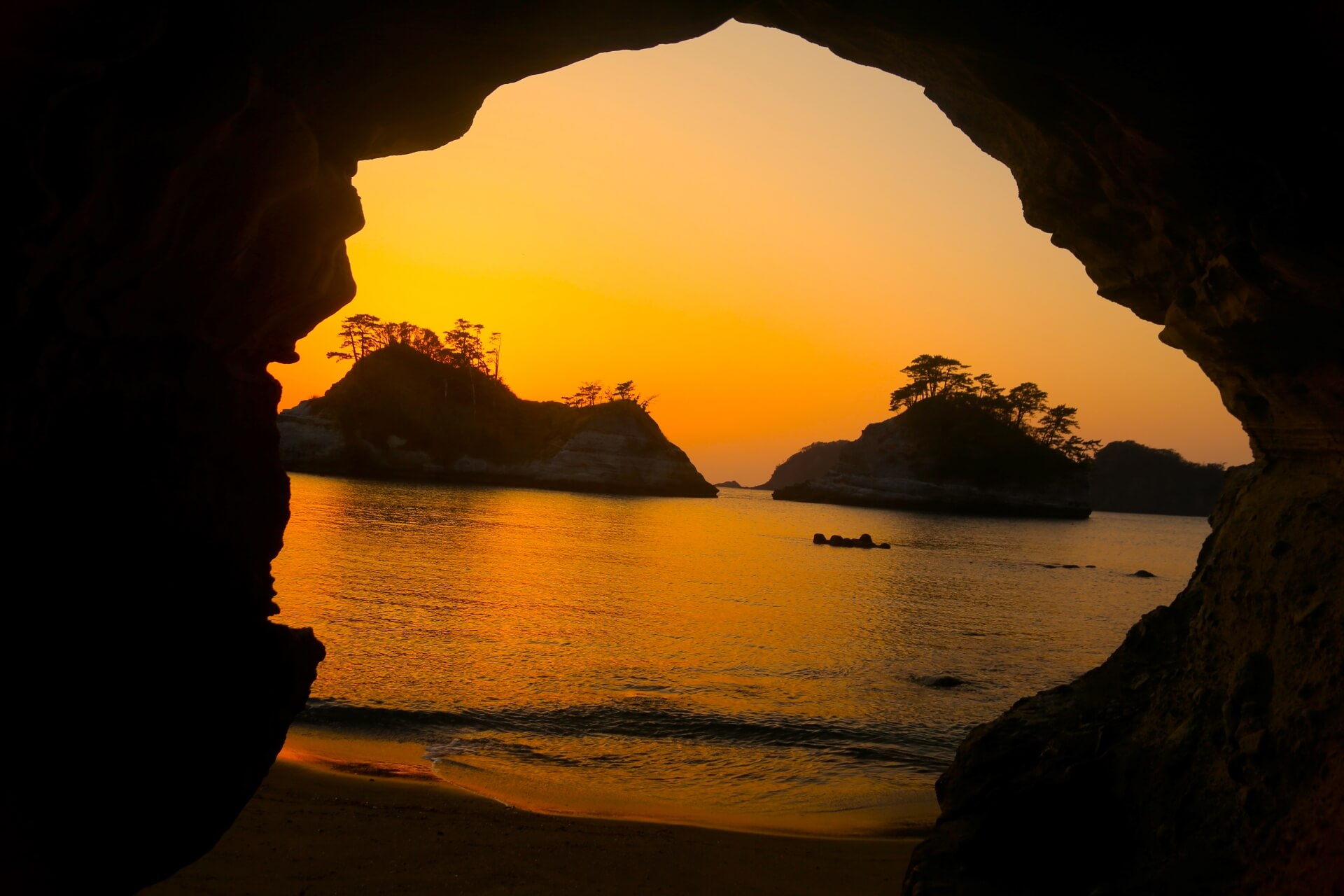
DOGASHIMA AREA
Daily cruises are available to visit the two islands and other points of natural importance on the coast.
KAWAZU
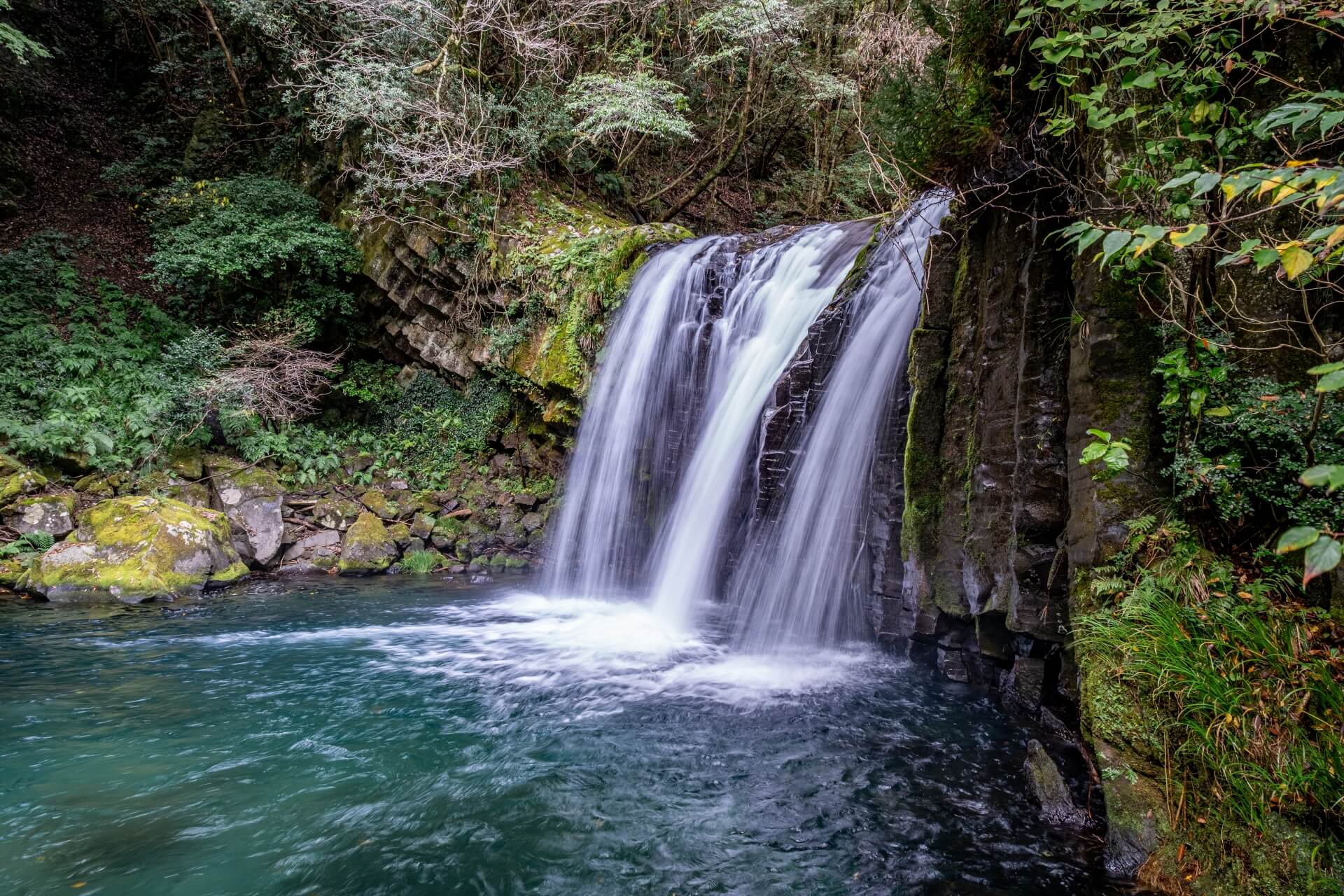
NANADARU SEVEN WATERFALLS
The Kawazu Nanadaru are seven waterfalls in the town of Kawazu. They range from the large 30-metre high ‘Odaru’ waterfall to the crab waterfall ‘Kanidaru’, which is only 2 metres high. You can find a pleasant forest path leading to all the waterfalls.
At the base of the path you can find the small spa resort Nanadaru Onsen and the imposing circular Kawazu Nanadaru Bridge, a unique two-storey spiral bridge along the National Road. There are only two such bridges in the whole of Japan.

KAWAZU CHERRY BLOSSOM FESTIVAL
The Kawazu Cherry Blossom Festival is held annually from early February to early March. It is a popular event celebrating the blossoming of the Kawazu cherry trees and attracts nearly two million visitors each year.
The Kawazu cherry trees are a slow-blooming variety of cherry tree compared to most other cherry varieties, so you have a longer period of time to enjoy the beautiful pink blossoms of the trees. The best time for viewing is between late February and early March. As there is a lot of traffic, the best way to go to see the blossoms is to use an eBike.
MATSUZAKI
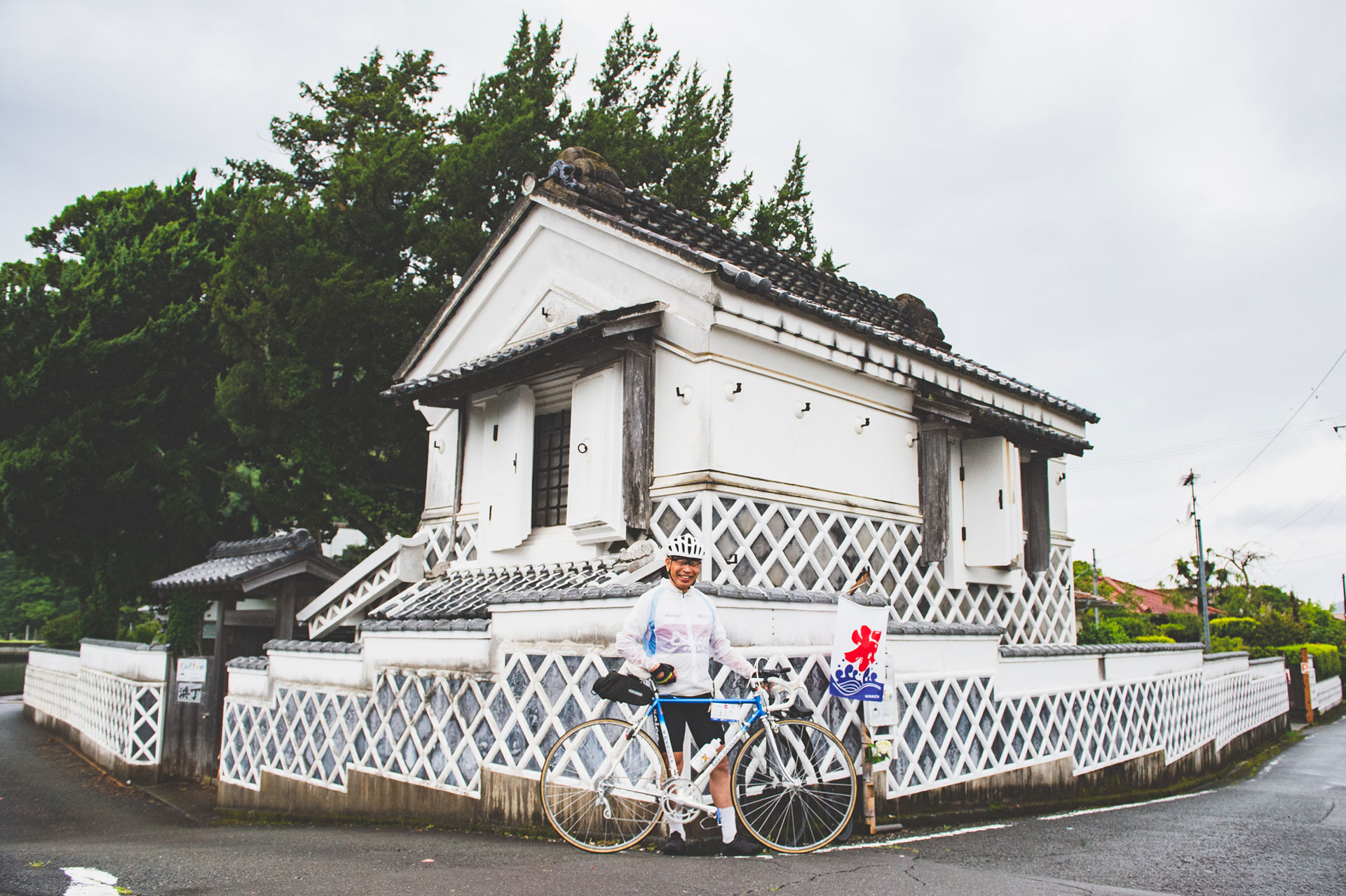
MATSUZAKI "NAMAKO" STYLE WALL
Matsuzaki is a small port town known for its traditional houses with unique ‘namako’ style walls. This is a traditional Japanese style of wall painting made using earthen plaster.
Matsuzaki is a perfect place to take a stroll while enjoying the cityscape.

KUMOMI BAY
Kumomi Inlet is not only famous for its crystal-clear waters where snorkelling and scuba diving can be done, but also for the beautiful view of Mount Fuji through two sacred rocks, called the ‘husband and wife’ rocks. Guided kayak tours are also available.
SHIMODA

ADMIRAL PERRY ROAD
Shimoda is a small town with many historical sites, a cable car with spectacular views and a quiet atmosphere, which became famous for Japan’s first diplomatic meetings with America in the 19th century.
On the famous Perry Road, one can admire the layout of the town that Admiral Perry saw more than 150 years ago.
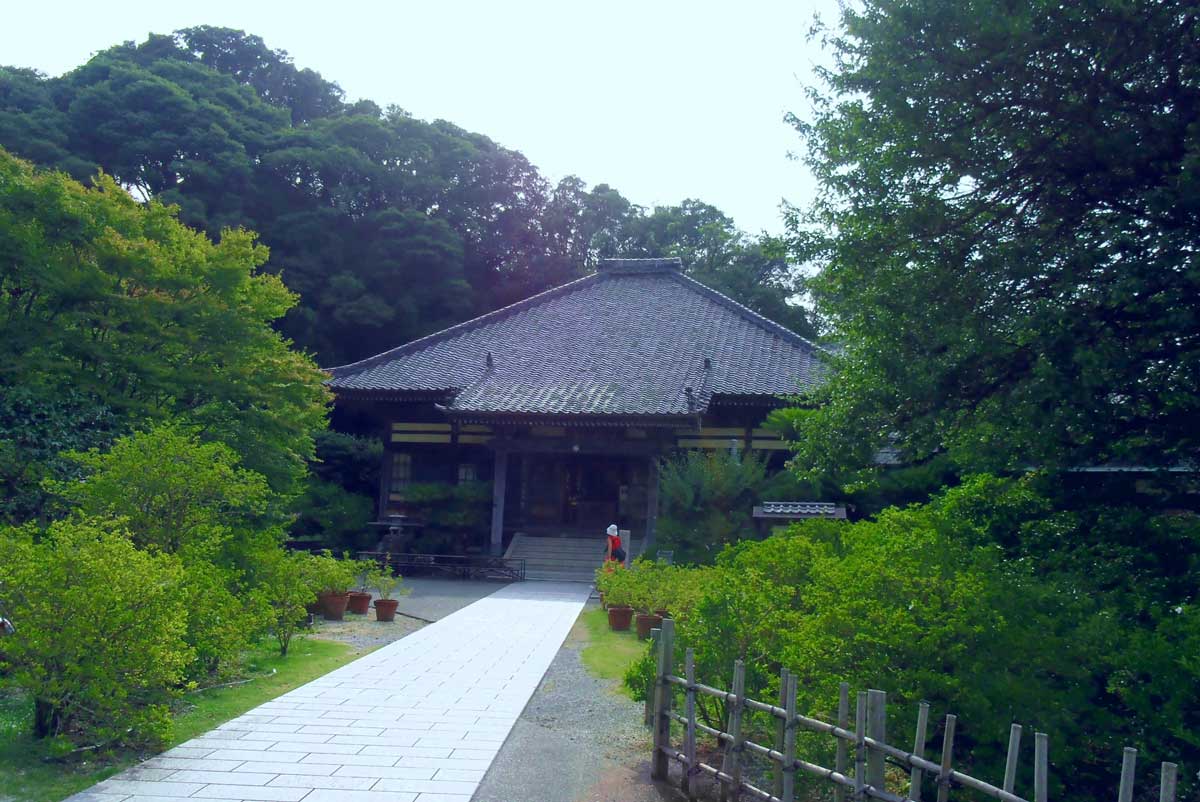
RYOSENJI TEMPLE
The Ryosenji Temple is a picturesque Buddhist temple where further diplomatic agreements were made between Japan and America. The temple also has a Treasury Museum housing historical relics of American ships. It is an ideal place to end a visit to Shimoda.
MINAMIIZU

IROZAKI OCEAN PARK
Irozaki is the southernmost promontory of the Izu Peninsula. Much of the surrounding coastline consists of volcanic ash and lava ejected from underwater volcanoes, creating a dramatic and fascinating landscape.
Views of the Pacific Ocean can be enjoyed from the top of the sheer cliff.
The Irozaki Ocean Park opened in 2019 and at its end you can find the Iro Temple, built overhanging the sea to protect ships.
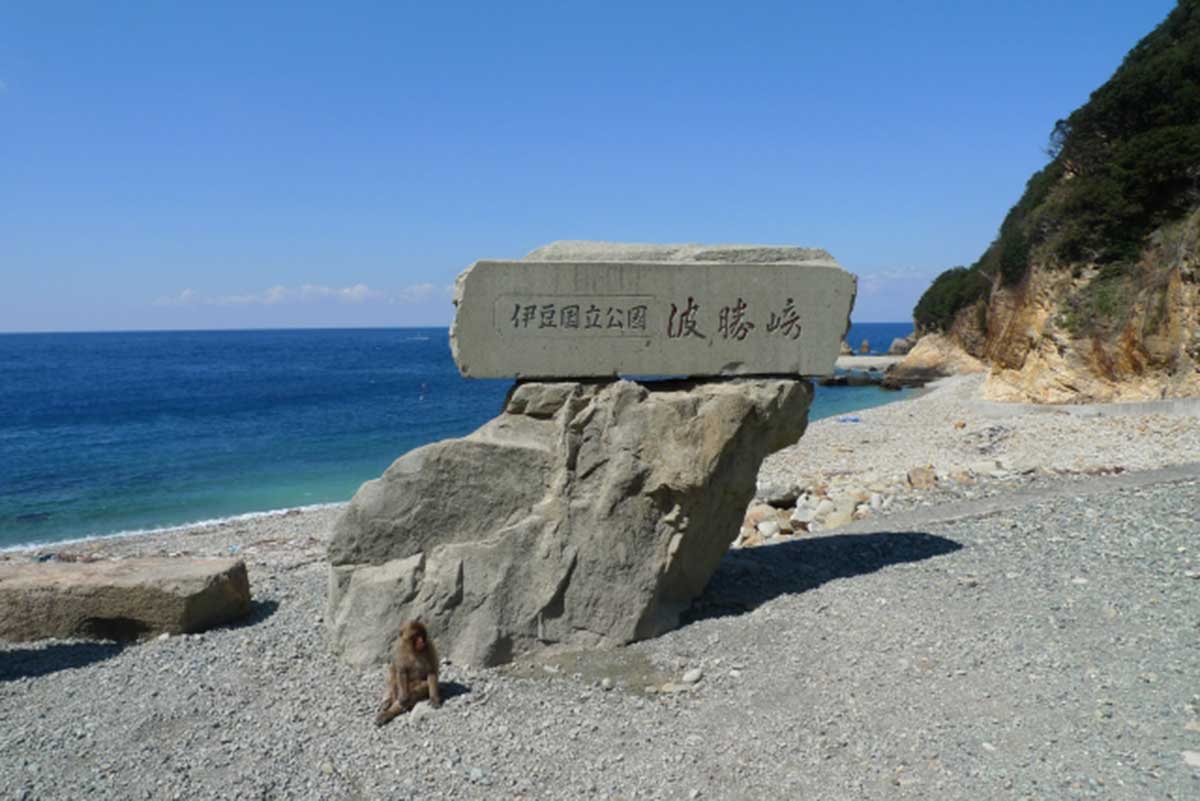
HAGACHIZAKI MONKEY BAY
Hagachizaki Monkey Bay is a unique bay famous for Japanese macaques. More than 300 monkeys live freely in their natural habitat. They can be seen up to a few metres away without any gates or fences separating them from visitors.
Admission ticket required.
yosenji Temple is a picturesque Buddhist temple where further diplomatic agreements were made between Japan and America. The temple also has a Treasury Museum housing historical relics of American ships. It is an ideal place to end a visit to Shimoda.

WHERE TO STAY
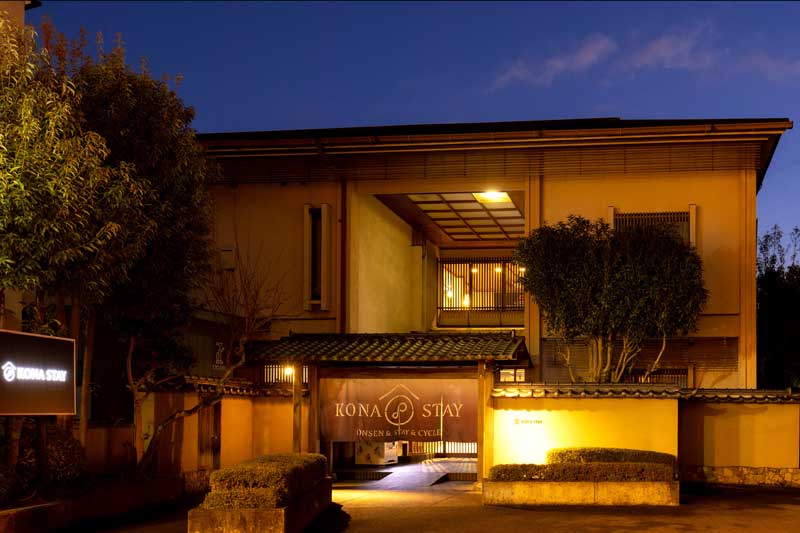
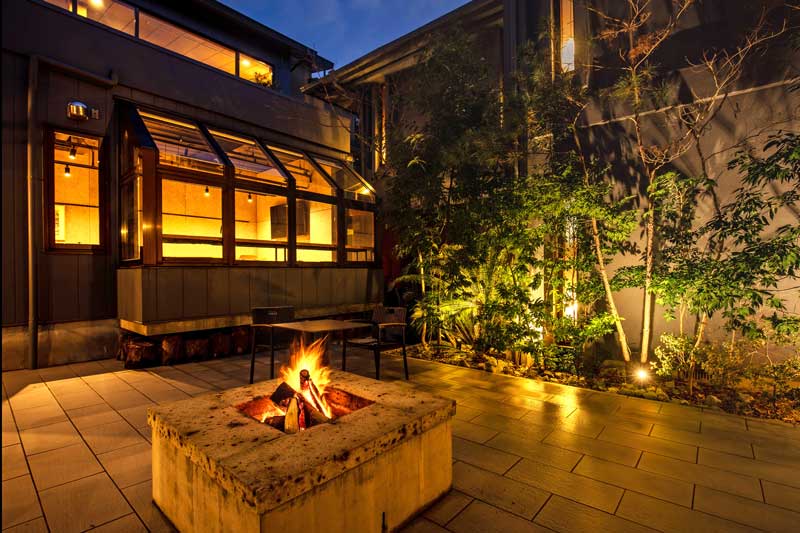


KONASTAY IZU NAGAOKA
Do you like cycling and would you like to stay in a hotel where you can clean and keep your bike safe?Konastay Hotel is a completely renovated bike hotel for you and is located in the heart of the Izu Nagaoka thermal area, the ideal place to discover the beauty of the Izu Peninsula.
Konastay Hotel has also been selected by the the Royal Dutch Cycling Federation (Koninklijke Nederlandsche Wielrenunie, KNWU) to host the national MTB team during the Tokyo 2020 Olympic Games. Among the guests will be multiple world road champion Mathieu van der Poel.

EASY ACCESS FROM TOKYO, NAGOYA AND OSAKA METROPOLITAN AREA
Thanks to the wide availability of JR Shinkansen train lines and limited express trains directly from Tokyo Station, Izu is an easily accessible region.
Step [1] Japan Railways (JR) Shinkansen bullet train
Tokyo/Osaka –> Mishima Station
*Trains every 30 minutes
Mishima –> Izunagaoka or Shuzenji station
*Trains every 20 minutes.
